
Before I begin today’s show-and-tell, I want to blandish those of you who haven’t yet done so into entering the First Periodic Author! Author! Awards for Expressive Excellence. Entry is free, the topic interesting (your very own contribution to our fascinating ongoing series on subtle censorship and other factors that discourage writers from writing what and how they want), and fabulous prizes await the winners.
Not to mention the immortal fame and ECQLC (eye-catching query letter candy) that winning such an award would doubtless entail.
The deadline for entry is Monday, May 18. To get those of you who have not yet entered inspired, I shall be devoting the rest of this week to continuing our discussion of ways in which writers are discouraged from sharing their stories, their writing, or even their opinions with the world at large.
In other words, to further exposition on the contest’s essay topic.
Not entirely coincidentally, today, I’d like to talk about a brand-new collection of essays on censorship edited by Nobel laureate Toni Morrison, BURN THIS BOOK: PEN Writers Speak Out on the Power of the Word (HarperStudio). Given the subject matter, I had picked it up in the expectation that it would provide a tremendous amount of food for thought about our ongoing subject; what came as a pleasant surprise was how squarely some of the essays in it spoke to writers about the problems of self-expression that are not externally imposed.
Before I get too carried away, here’s the publisher’s blurb for the book. I added the links, so anyone who is interested may learn more about the authors cited:
Published in conjunction with the PEN American Center, Burn this Book is a powerful collection of essays that explore the meaning of censorship, and the power of literature to inform the way we see the world, and ourselves. Contributors include literary heavyweights like Toni Morrison, Salman Rushdie, Orhan Pamuk, David Grossman, Nadine Gordimer discusses the role of the writer as observer, and as someone who sees “what is really taking place.” She looks to Proust, Oe, Flaubert, and Graham Greene to see how their philosophy squares with her own, ultimately concluding, “Literature has been and remains a means of people rediscovering themselves.” “In Freedom to Write,” Orhan Pamuk elegantly describes escorting Arthur Miller and Harold Pinter around Turkey and how that experience changed his life.
As Americans. we often take our freedom of speech for granted. When we talk about censorship, we talk about China, the former Soviet Union. But the recent presidential election has shined a spotlight on profound acts of censorship in our own backyard. Both provocative and timely, Burn this Book includes a sterling list of award winning writers; it is sure to ignite spirited dialogue.
If some of those names sound familiar, it’s because the only reason that some of them aren’t on the current short list for the Nobel Prize in Literature is that most of these writers have already won it, and some of the others have already passed on to That Great Literary Salon in the Sky. (That, and the fact that I mentioned Graham Greene on this very blog only yesterday might have left him rattling around regular readers’ brainpans.)
This is, in other words, not just a book of commentary by writers on writing. It’s a book of commentary by WRITERS on WRITING.
The Who’s Who line-up is part of the fun of this book, actually, insofar as a serious collection of essays on the horrors of censorship can be said to be fun: quite a number of these essays involve exceedingly well-known authors whom we all admire writing about the work of exceedingly well-known authors that they admire. Let me tell you, if you’ve never seen John Updike gush about the bravery of Henry Miller’s early novels, or Francine Prose sigh about how she wishes she had known Roberto Bolaño — well, suffice it to say the besotted reader is a side of an Eminènce Grise one seldom sees.
Since pretty much all writers start out life as besotted readers, it’s rather refreshing to behold the greats owning up to it. And hey, I’m not too proud to admit it: I did feel incrementally cooler, literarily speaking, upon seeing that Ms. Prose and I share an admiration for Wallace Shawn’s THE DESIGNATED MOURNER — but of that excellent play, more follows below.
This volume’s tendency to praise means, among other things, that BURN THIS BOOK is an absolutely terrific source for what I like to call good book surfing — learning what books have influenced authors one loves, tracking those works down, and reading them. I know of few better ways to gain a sense of being part of a literary tradition.
(The months I spent following the reading tips Jane Austen so carefully laid out in NORTHANGER ABBEY completely changed my understanding of 18th-century female authorship, for instance. Aunt Jane’s shelves were apparently stuffed to the gills with women’s writing — which I imagine would come as something of a surprise to all of the compilers of English literature syllabi who habitually present her as having sprung into literary history as a complete anomaly. And don’t even get me started on what Anne Brontë — whose brilliant novel about substance abuse, THE TENANT OF WILDFELL HALL, was dismissed by contemporary critics as “utterly unfit to be put into the hands of girls,” speaking of disregarded voices — or Mary Wollstonecraft Shelley were reading in their spare time.)
I also found it both fascinating and amusing to see really, really famous authors incorporate the same essay-writing tactics that, say, a high school junior might use in making a case against censorship. Who’d have thought, for instance, that Updike, surely enough of a literary name to express his own opinions unaided, would feel the need to justify his statements about how difficult writers find their work by citing what Flaubert said of his own struggles?
And after having spent many years patiently explaining to university students that defining one’s terms in an essay did not mean just opening the nearest dictionary and reproducing what’s printed there, what was I to make of Nadine Gordimer’s using the Oxford English Dictionary in precisely that manner in her essay? Oh, how glad I was that I’m no longer lecturing when I saw that. My students would surely have waved Ms. Gordimer’s piece in my face endlessly, as proof positive that it is possible to incorporate a verbatim dictionary definition gracefully into a written argument without boring readers to death.
But I would still urge amateurs not to try it at home. The twins goals of defining one’s terms in an essay are to demonstrate that one knows what one is talking about and to make sure that the reader does as well, not merely to plagiarize what some underpaid linguist at Funk & Wagnall’s said about a particular word or phrase. For this reason, hyper-literalists tend not to make the best essay-writers.
Despite undermining one of my first rules of academic essay-writing, I would highly recommend BURN THIS BOOK to readers of high school and college age. Why? Well, because this book contains so many good examples of the kinds of essays high school and college students are so frequently asked to write, it’s an inadvertently helpful how-to manual on how to structure and argue a piece on an abstract topic.
(Are the standardized test folks still giving vaguely provocative essay topics like, Censorship: is it ever a good idea? and Should a government try to legislate morality? They seem so open-ended, but the graders are invariably looking for a particular type of argument. In my day, the Achievement Test scorers would automatically spot you quite a few points if you managed to work Rosa Parks’ historic bus ride into your essay, regardless of the topic. The point of academic writing is not necessarily knock-your-socks-off style, if you catch my drift.)
For this reason, BURN THIS BOOK seems like a natural to assign in a composition course, to teach young writers the tricks o’ the trade, as it were. Or perhaps it would make more sense in a literature class. I would slap it onto the syllabus right after THE GRAPES OF WRATH, to provoke some interesting discussion about the hows and whys of banning books, and just before THE CATCHER IN THE RYE.
Speaking of Nobel laureates, are you surprised to hear that THE GRAPES OF WRATH was ever banned? No kidding: schoolteachers all over the US had a hard time assigning it for decades, and not always because of that left-leaning speech that Henry Fonda, the Tom Joad of the movie, gives at the end. (But usually. You’d be amazed at how seldom clamorers against a book have actually read it; it’s not unheard-of for parents to go roaring into school board meetings to scream about a scene from the movie version of an assigned book, only to learn that the objectionable bits were the filmmaker’s invention. The protests over the movie version of THE LAST TEMPTATION OF CHRIST, for instance, were over a love scene that wasn’t particularly startling in the book; what brought the threat of excommunication onto novelist Nikos Kazantzakis’ head was the book’s treatment of Judas‘ role in the story, not the Big Guy’s.)
Wondered long enough what anyone who wasn’t worried about Communist infiltration of America’s high schools might have had against THE GRAPES OF WRATH? Not surprisingly, it’s a scene that didn’t make it into the movie, although it’s far from explicitly written: Rose of Sharon feeds a man who’s starved too long to be able to ingest solid food what, ahem, she might otherwise have fed her stillborn baby.
The reason I’m being a bit vague here, incidentally, is that some of my readers have access to this blog only through their school or public library computers. If I described the ending of the book any more clearly, the individual words that I would have to use might result in this page getting blocked by what are euphemistically known as parental control programs.
I know; it’s not pleasant to contemplate. But like it or not, it is the world in which we write.
By suggesting that BURN THIS BOOK might make for some interesting classroom discussion, I don’t mean to imply that that all of the essays here are equally good; they’re not. At times, the reader is left wondering what some of this undoubtedly well-written rambling has to do with the topic at hand, or even if there is a single topic tying the book’s many entries together. (Also, semicolons are not always used correctly throughout, something that’s likely to bug a teacher charged with explaining to students that ; and is in fact redundant in a list that contains a series of semicolons, since the earlier semicolons were ostensibly replacing and.)
The authors’ assigned briefs seem to have been rather disparate, as if contributors were merely asked to contribute an essay, rather than an essay on book-banning: collectively, this is a better collection of writing about writing than writing about censorship. As a result, the subtitle (PEN Writers Speak Out on the Power of the Word) is a substantially more accurate indication of what lies between the covers than the title.
Of course, being a book about writing is not necessarily a drawback in a collection of essays whose target market is writers. As one would expect from an edited volume by such a terrific bunch of writers (a contributor list that also includes Paul Auster, Pico Iyer, Russell Banks, and Ed Park, in case you were wondering), BURN THIS BOOK abounds in really glorious quotes, the kind that aspiring writers like to jot down on little scraps of paper and tape to their computer monitors to inspire them in moments of creative desperation.
Seriously, there is some lovely, inspiring stuff here. Take, for instance:
“A writer’s life and work are not a gift to mankind; they are its necessity.” -Toni Morrison“When we write, we feel the world in flux, elastic, full of possibilities — unfrozen…I write, and the world does not close in on me. It does not grow smaller. It moves in the direction of what is open, future, possible. I imagine, and the act of imagination revives me. I am not fossilized or paralyzed in the face of predators. I invent characters. Sometimes I feel as if I am digging people out of the ice in which reality has encased them. But perhaps, more than anything, the person I am digging out at the moment is myself.” — David Grossman
“Thus the true task of the novelist is to dramatize first for himself or herself and ultimately for the rest of us what it is to be human in our time and for all time. What it is to be human in our place and in every place. As a species, we have always depended upon our storytellers to tell us what it means to be human. To be ourselves.” — Russell Banks.
“The artist’s personality has an awkward ambivalence: he is a cave dweller who yet hopes to be pursued into his cave…J.D. Salinger wrote a masterpiece, The Catcher in the Rye, recommending that readers who enjoy a book call up the author; then he spent his next twenty years avoiding the telephone.” — John Updike
Okay, so I thought that last one was sort of funny. My point is, there’s a lot of rich ore here for the writer searching for insight to mine.
Finally — and most relevant to our ongoing series — despite a certain range of topic, most of these essays have quite a few interesting things to say on censorship. Or, more precisely, about the kinds of things than can happen to people who write the truth when those in power don’t want those truths bruited about.
As Wallace Shawn’s THE DESIGNATED MOURNER (I told you I’d be coming back to it) makes so mournfully clear, the writers, the artists, the truth-tellers tend to be among the first carted off in times of great fear. The world is substantially less interesting for it — and less safe, my friends, for people like us.
BURN THIS BOOK reminds us to ask ourselves every so often when we look at the world around us, gathering impressions to inform our writing: what stories are going unheard? Whose voices are not particularly audible, from a literary perspective? Which voices are actively discouraged, and which do the fine folks who run publishing houses just not think will sell very well?
To share some questions that popped into my mind when I first began to contemplate running this series: what does the reader of mainstream memoir currently know about the kind of prison conditions that guest blogger Shaun Attwood told us about last weekend? Heck, how much does the mainstream novel reader know about the other side of the legal equation, what goes on behind the beautifully-veneered doors of the high-powered law firms Mary Hutchings Reed wrote about? If those inside these institutions don’t share with the world how they run, how precisely are the rest of us to find out? Telepathy?
And how much does the fear of riling nay-sayers affect what we ask readers are able to find on the shelves? Considering how hot narrators with mental disabilities have been over the last few years, why do readers so seldom see book either about or by people with physical disabilities, as Eileen Cronin brought to our attention in April? Does a hot-button political debate actually have to be over before the publishing world would get excited about an intriguing memoir like Beren deMotier’s, which couldn’t possibly be more timely? How much does the prospect of negative reader reaction cause even established authors to alter their content in order to avoid controversy, as Bob Tarte discussed?
These questions trouble me in the dead of night; honestly, they do. And what’s more, they should.
Yet while all writers are potentially affected by censorship, subtle and otherwise, we don’t tend to talk much amongst ourselves the more draconian ways in which it is wielded, up to and including imprisoning or even killing outspoken authors. Those possibilities certainly deserve more of a place in writerly discussion of what does and doesn’t get published than we usually hear — and, to be candid, what you hear from me here on this blog.
For the most part, the untold stories and as-yet-undiscovered voices we discuss are ones that are having trouble pleasing someone with the authority to get them published, rather than the ones that must overcome actual legal barriers or strong social taboos in order to see the light of day at all. As a result, writers’ conferences, writers’ fora, and yes, blogs like this one tend to focus upon finding a market for our work, or better ways to touch the heart of a reader, or decoding the often perplexing ways of agencies and publishing houses.
So an alien from another planet landing in the middle of your garden-variety North American writers’ gathering would probably assume that a great undiscovered writer’s voice not being heard is primarily the result of her submissions being rejected or ignored, rather than, say, a heavily-enforced prohibition upon writing anything remotely critical about her government, or laws that ban a writer from offending someone else religious sensibilities. “My, what a lot of freedom creative artists have here,” E.T. might conclude.
That’s not meant as a criticism of the very practical concerns of those trying to get published — far from it. It’s completely natural that worrying about freedom of expression worldwide may not be the most immediate concern for a writer who is trying to find an agent for a torrid romance involving a country doctor and a cowgirl or hoping to publish a science fiction trilogy on the colonization of the Crab Nebula. At that juncture, it’s certainly understandable if trying to second-guess what the gatekeepers of the book world want to see is of far more absorbing interest than which might be happen to a writer one doesn’t know personally someplace else.
Heck, after seemingly endless rounds of querying, a series of rejected submissions, and/or being told flatly by an agent or editor after a verbal pitch, “Oh, there’s just no market for that kind of book right now,” plenty of writers feel that there’s an active conspiracy against their kind of work.
In a moment of feeling unheard — which, let’s face it, forms a large part of the frustration of trying to find an agent or waiting for one’s agent to sell one’s books — a collection of essays like this that deals with more drastic means of keeping writing (and writers) out of the public eye can be very useful for reestablishing perspective. Sometimes, we could all use someone who has been down the path before us to remind us that it is indeed worth taking — and that as writers, we are all part of a global community that some people are always going to find threatening.
I just mention.
While I’m at it, I’ll also mention that BURN THIS BOOK is available on Amazon and at Borders.
Does all of this high-falutin’ talk about the importance of considering the situation of writers worldwide mean that I’m abandoning the attention to nit-picky, practical details for which Author! Author! has become so justly famed? Of course not; rest assured, bread-and-butter issues will once again abound here soon.
But in the meantime, consider giving some thought to the big picture. And, as always, keep up the good work!

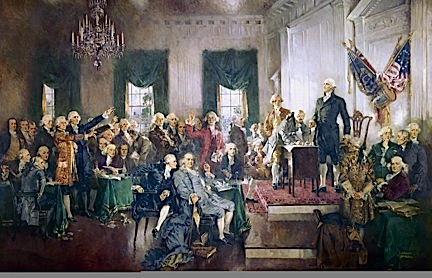








 Some of you may be familiar with Sheriff Joe Arpaio, the star of the reality TV show,
Some of you may be familiar with Sheriff Joe Arpaio, the star of the reality TV show, 













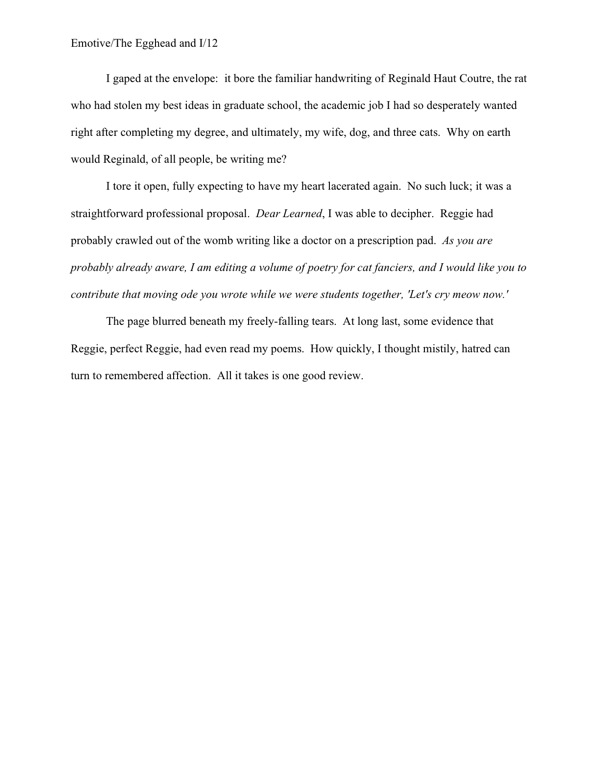

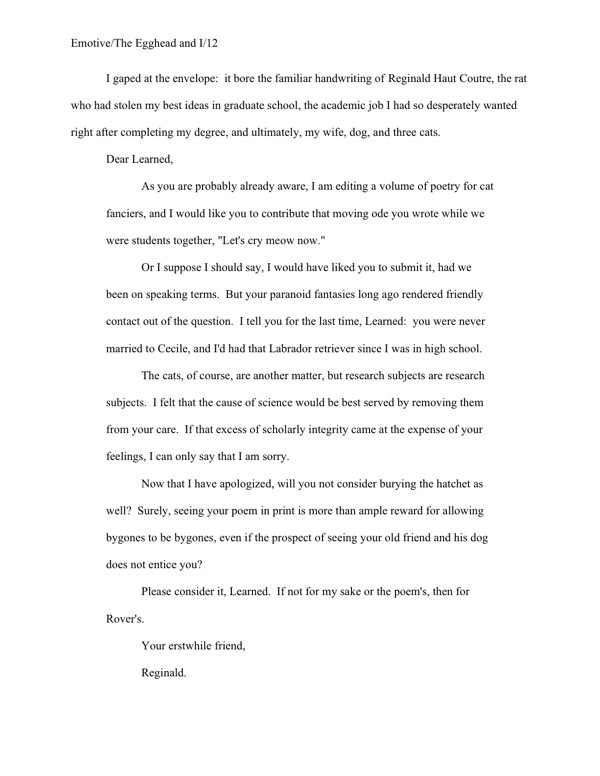










































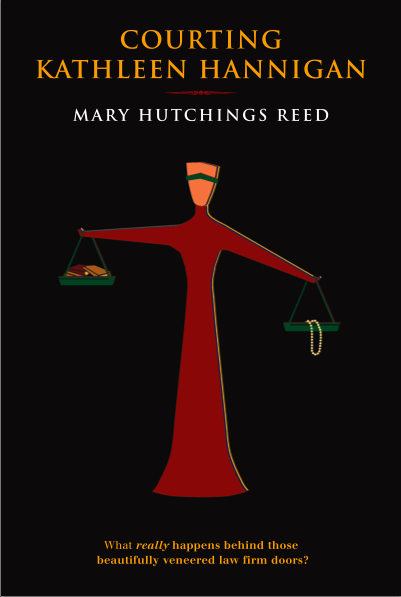


 Ever since turning 40 a few years ago,
Ever since turning 40 a few years ago, 




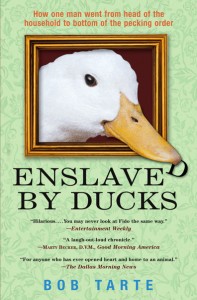 Enslaved By Ducks
Enslaved By Ducks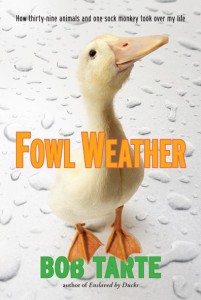 Fowl Weather
Fowl Weather




